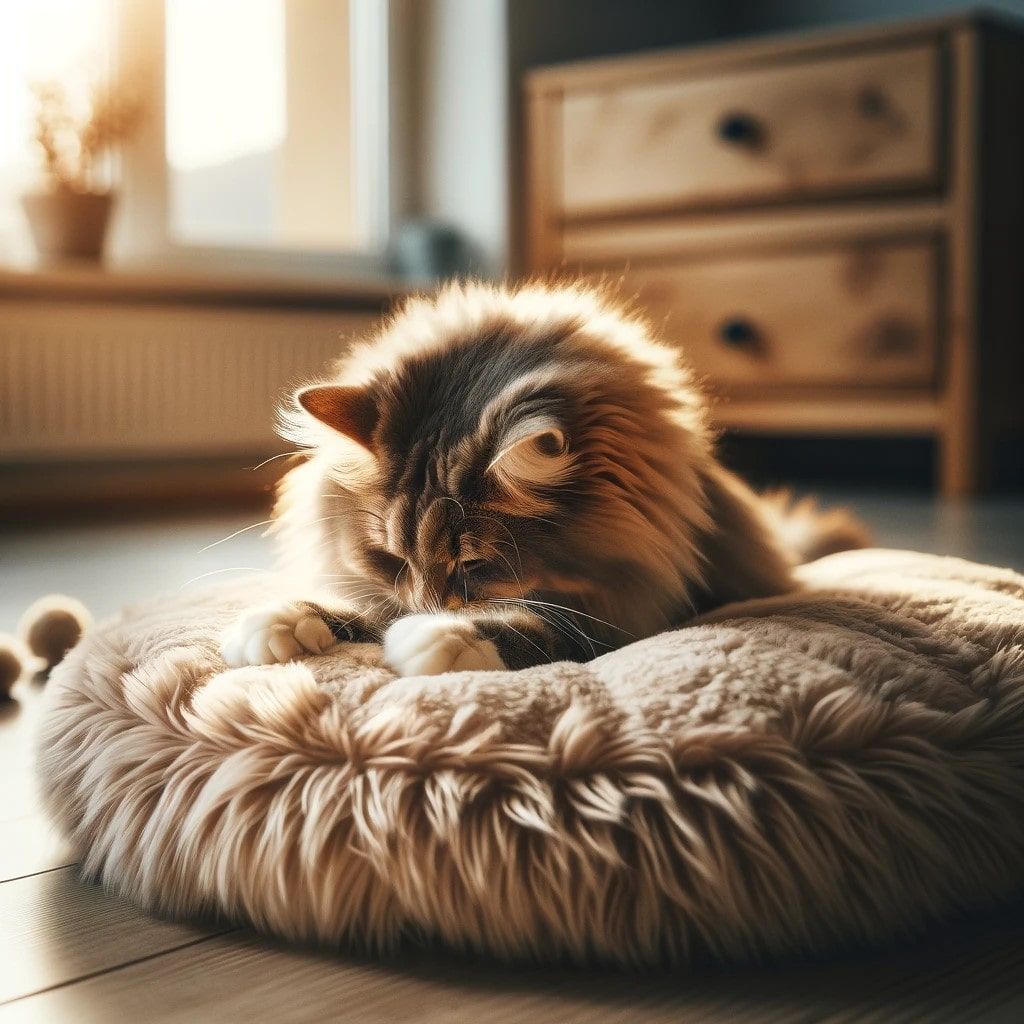Why Do Cats Knead Their Bed?
One captivating phenomenon that has puzzled cat owners for ages is the rhythmic motion of cat kneading. You're not alone if you've ever wondered why your feline companion engages in this intriguing behavior. Beyond its adorable charm, cat kneading is a complex expression beyond mere comfort.

The Basics of Cat Kneading
Picture this: Your cat curls up on its cozy bed, paws rhythmically pressing against the soft surface. This rhythmic motion, known as cat kneading (also adorably called making biscuits), is a standard behavior observed in cats of all ages. Often compared to the rhythmic motion of kneading dough, this action involves alternately pushing their paws against a soft surface, such as a blanket or bed. While it may appear whimsical and endearing, cat kneading is deeply rooted in a cat's instinctual behavior.
Understanding Cat Behavior
One must first grasp the underlying instincts that drive this behavior to comprehend the intricate world of cat kneading. Cats, by nature, are territorial creatures with an acute sense of comfort and security. Understanding cat behavior involves acknowledging the significance of kneading as a carryover from kittenhood.
Kittens instinctively knead their mother's belly during nursing to stimulate milk flow. This soothing motion provides not only nourishment but also a sense of security. As cats grow into adulthood, this behavior often becomes a comforting ritual. Therefore, when your adult cat kneads its bed, it might seek the same sense of security and contentment reminiscent of their kittenhood.
Cat Kneading as a Stress Reliever
Have you ever noticed your cat kneading more frequently during stressful situations? A stressed cat often turns to this rhythmic action as a coping mechanism. Kneading helps release endorphins, providing the feline with a soothing effect. In times of stress, whether due to environmental changes, introducing a new pet, or other disruptions, your cat may instinctively resort to cat kneading to alleviate tension.
Cat Bonding Through Kneading
The connection between cat kneading and cat bonding is an intriguing aspect of feline behavior. When a cat kneads its bed, it is not merely seeking physical comfort but also expressing a profound emotional connection. This behavior is often accompanied by purring, another instinctual trait associated with contentment and well-being.
As your cat kneads, it is engaging in a form of communication. Through the rhythmic motion of its paws, your feline companion is signaling trust and affection. This unique bonding ritual strengthens the emotional connection between you and your cat, fostering a sense of security and attachment. It is incredibly endearing when your cat curls up in your lap and kneads your leg or arm.
Creating an Enriched Environment
Consider providing an enriched environment to nurture a healthy cat bonding experience and cater to your feline friend's instincts. Soft blankets, cozy beds, cat toys, and designated spaces where your cat feels protected and secure can encourage more frequent cat kneading. Additionally, spending quality time interacting with your cat through gentle petting and play enhances overall well-being for your kitty.
Cat kneading stands out as a multifaceted expression that goes beyond a simple act of comfort. From its roots in kittenhood to its role as a stress reliever and a means of fostering cat bonding, this rhythmic motion reveals the nuanced world of cat communication. The next time you observe your cat indulging in this enchanting behavior, know that it's more than just kneading - it's a silent language of trust, comfort, and a timeless connection between you and your feline companion. If you have any questions or want to schedule an appointment, contact us today.


